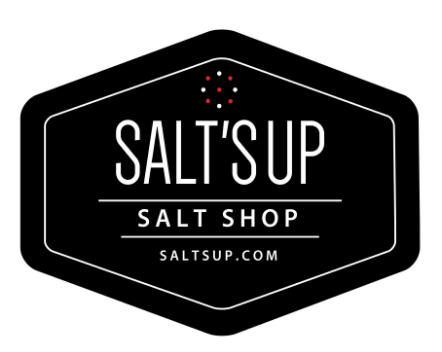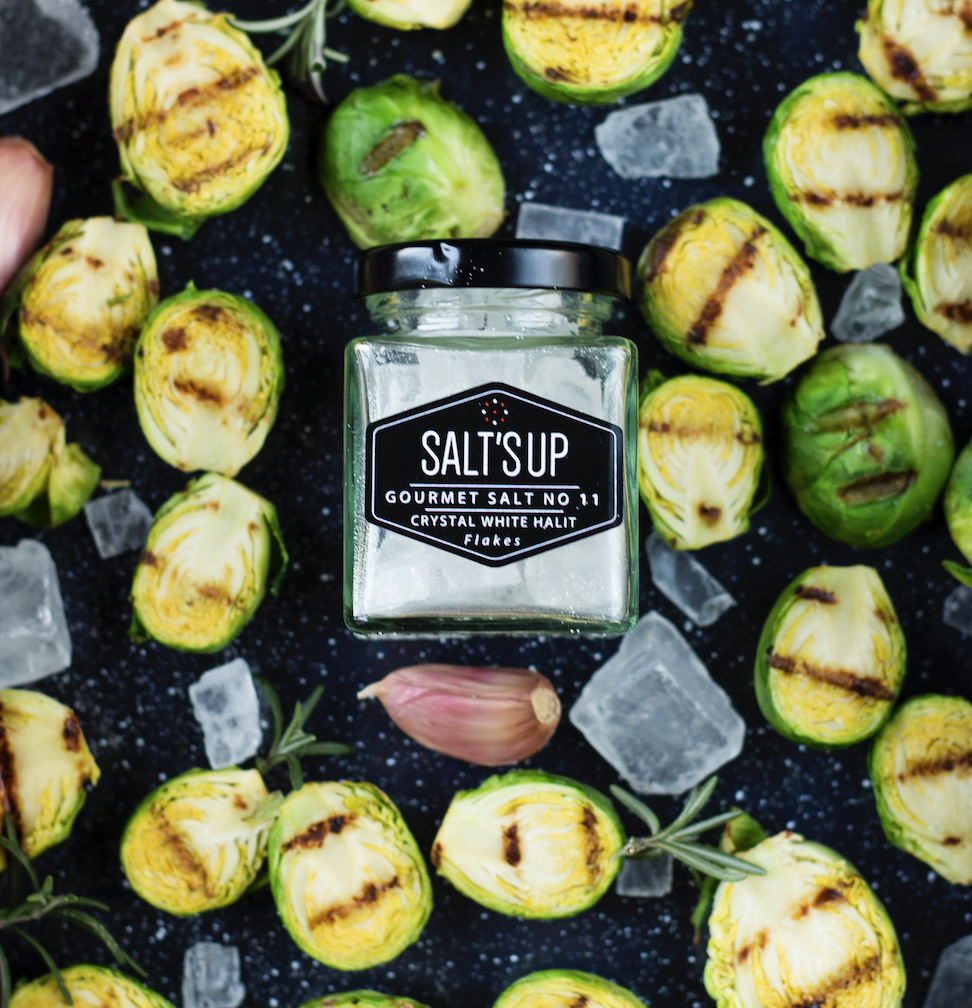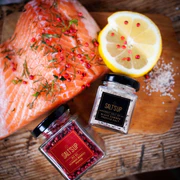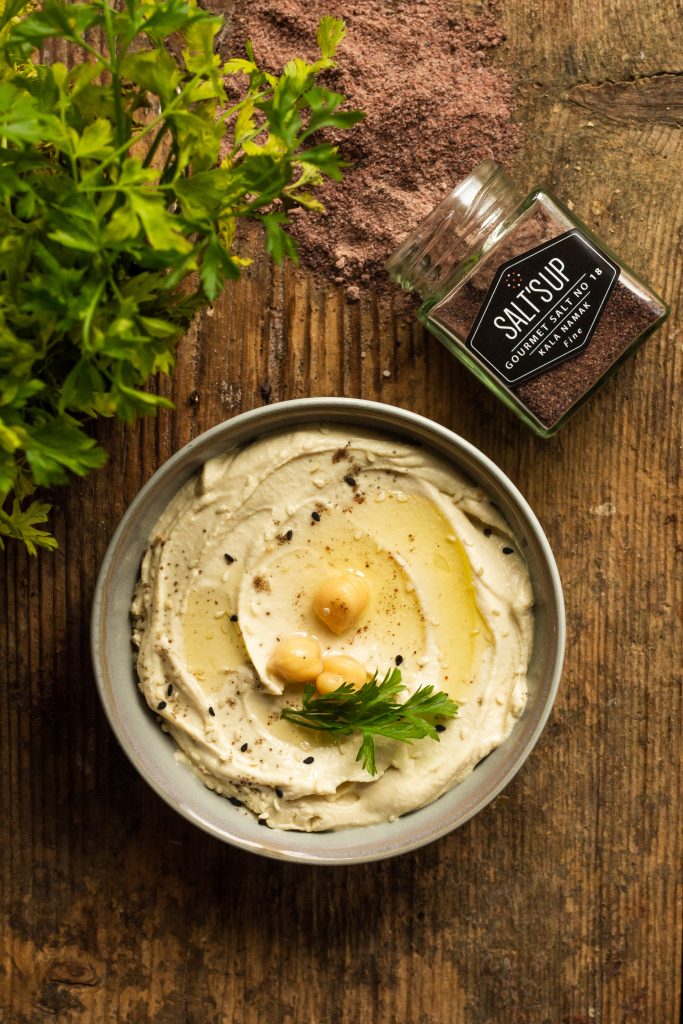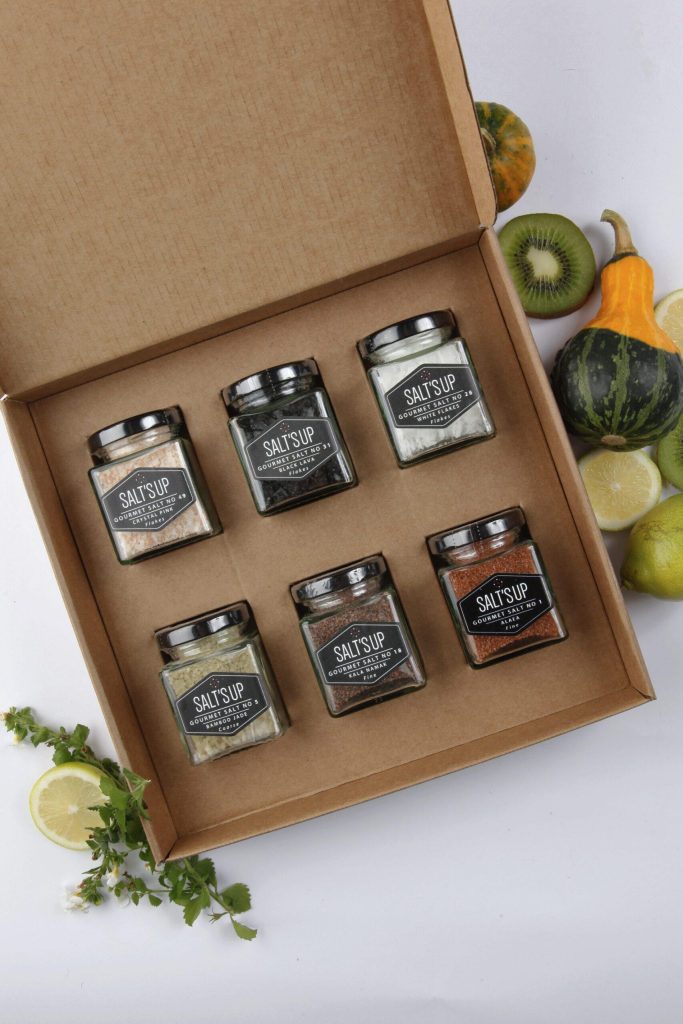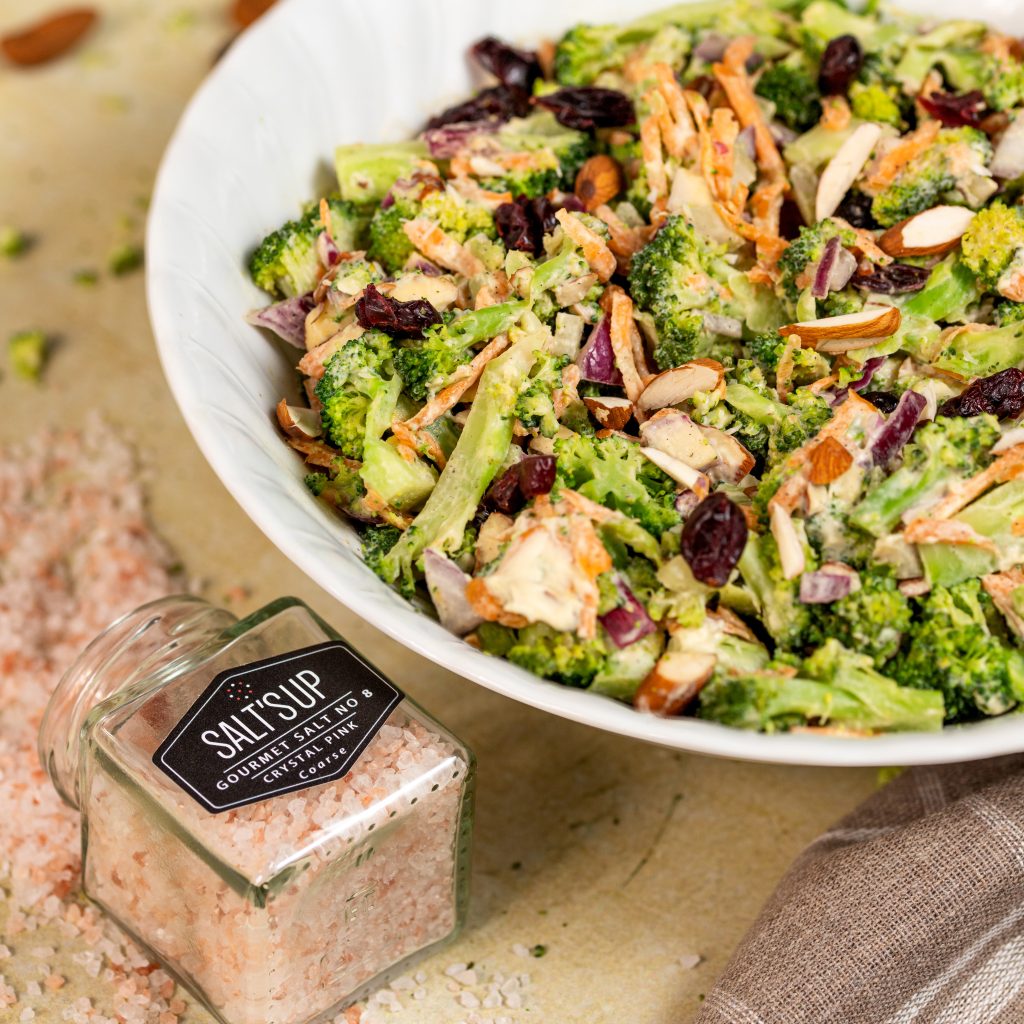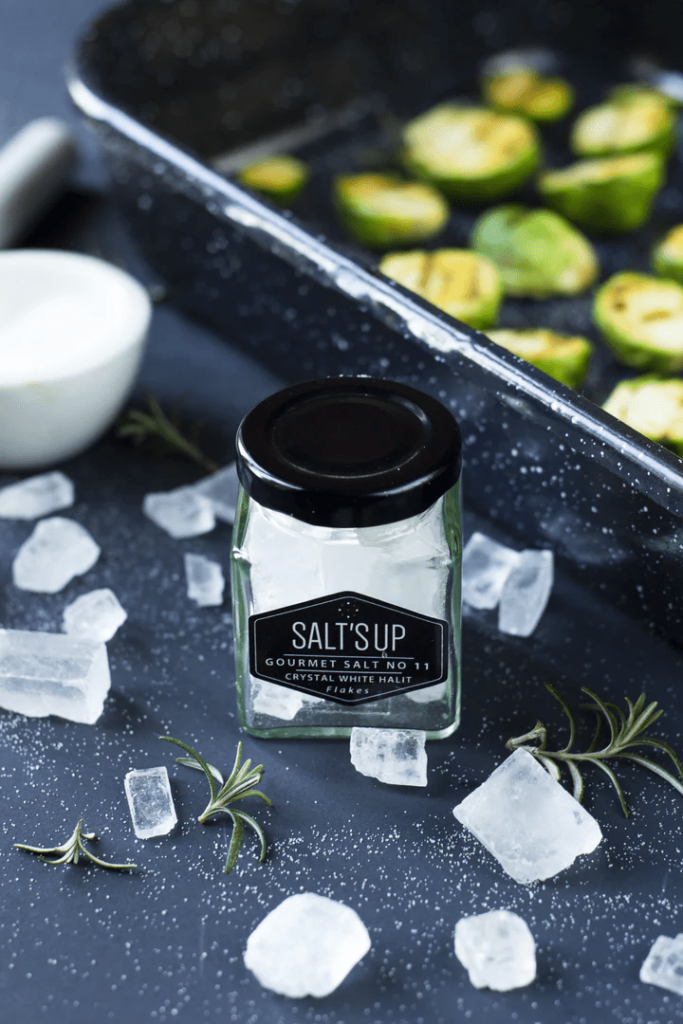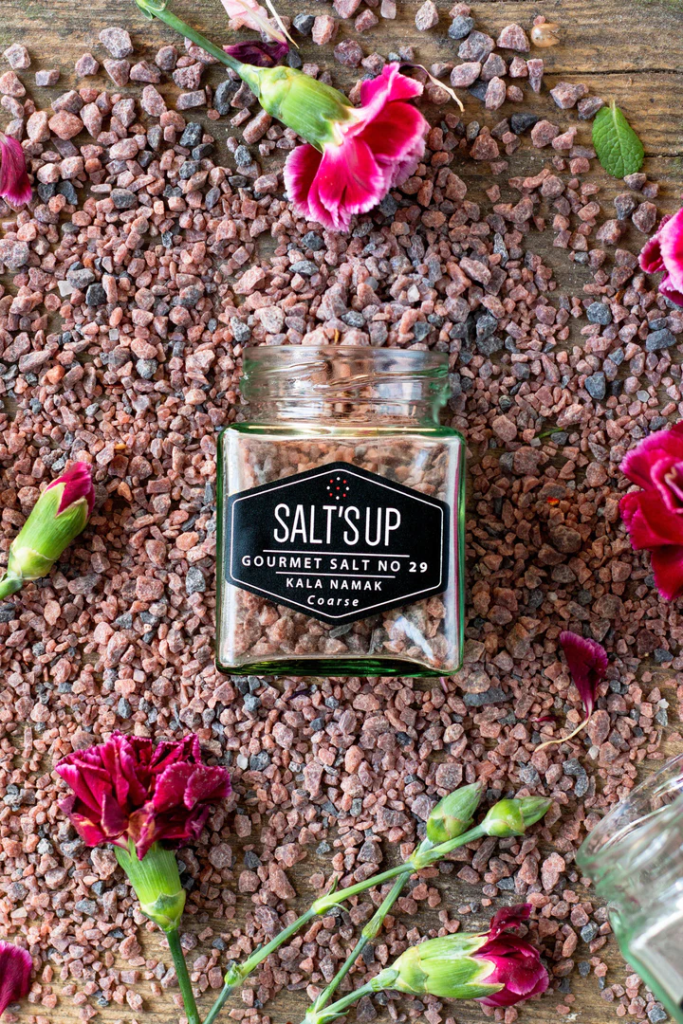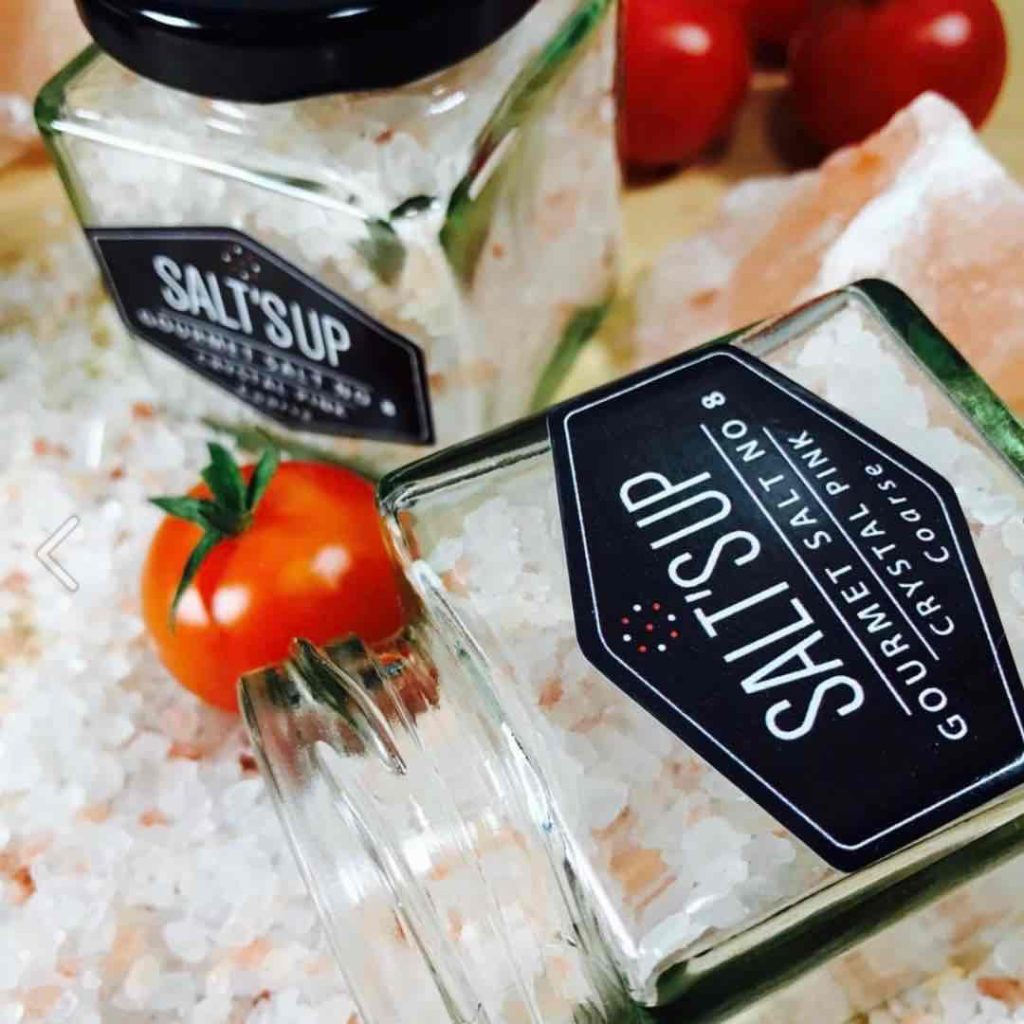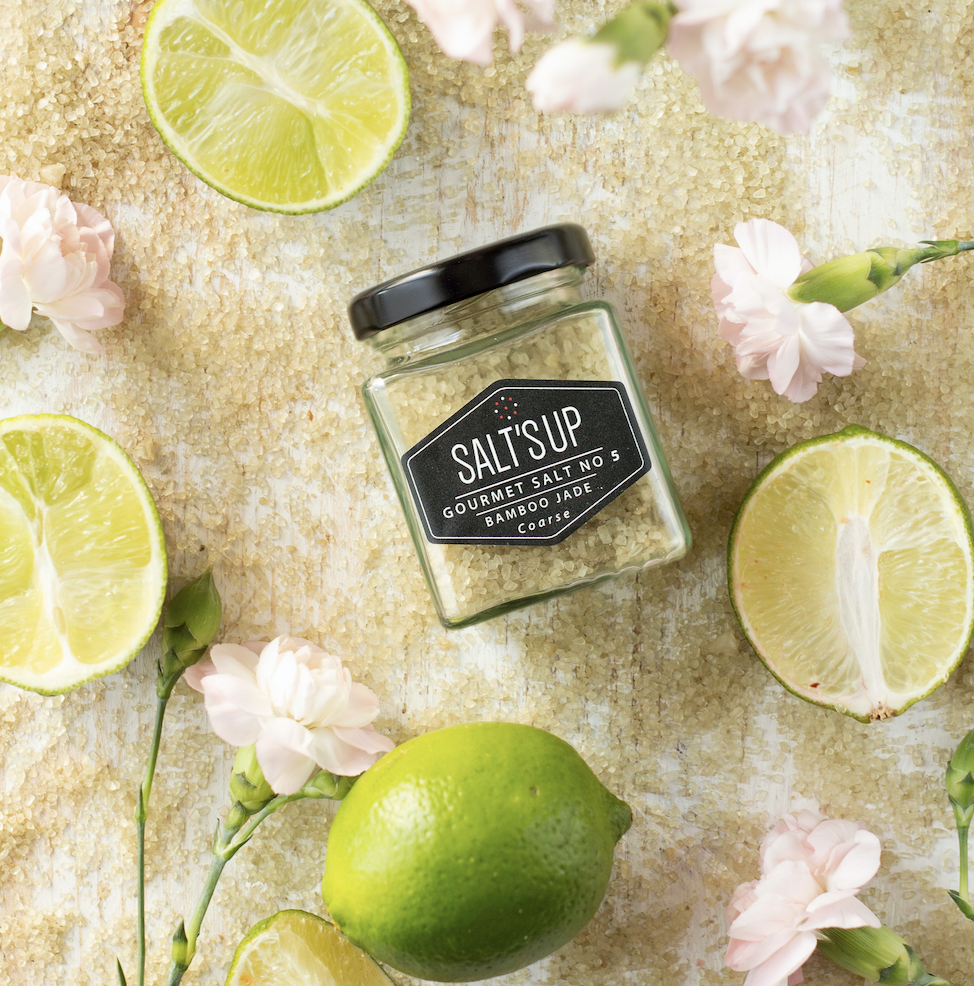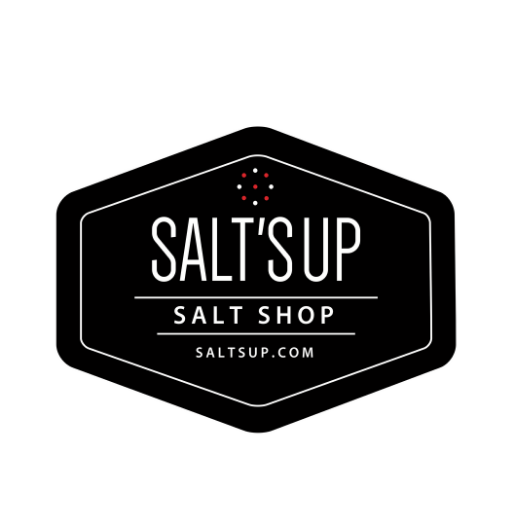- Salt use in Kitchen and Home: How to use salt whilst cooking? Use salt to clean fridges, pans and fish tanks. Life hacks with salt
- Fun Facts About Salt: The Uses Of Salt. Craving Salt and Salty Foods. Is there sodium in salt?
- Health Facts About Salt: Is Salt Healthy? Should I avoid salt? Salt and Heartburn. Drinking Salt Water. Can Too Much Salt Kill?
- History of Salt. What Does The Word Salary Mean? Who First Used Salt? Salt Usage To Preserve Bodies And Meat.
- Where Does Salt Come From? Is There Salt On Other Planets? Where Does The Himalayan Salt Come From?
- Superstitions About Salt. Salt And The Evil Spirit. Salt With Bread As A Welcoming Snack.
- Other Uses Of Salt: Science and Industry use. Salt Purifying Fuel. Salt Inside Soaps. Salting and Tanning.
- Salt and Animals: Do Animals Need Salt? Where Do Wild Animals Get Salt from? Magnesium In Salt.
- Salt In Beauty: Salt Preventing Wrinkles. Saltwater Pools prevent aging. Puffy Eyes Fixed With Salt.
Salt use in Kitchen and Home: How to use salt whilst cooking? Use salt to clean fridges, pans and fish tanks. Life hacks with salt
- Salt prevents boiled eggs from cracking. Do your eggs crack while peeling after you boil them? You can prevent this by adding salt to the water while cooking the eggs. Once the egg is boiled, you will have the smoothest peel ever.
- Use salt to match nylon colors. You can use salt to dye nylons to a matching color. In a kettle of lightly salted water, good nylons that are mismatched can be made to look identical in only a few minutes.
- Salt relieves bee stings. If you get stung by a bee, you should immediately wet the area and then apply salt.
- Put out a frying pan and blaze it with salt. To suffocate a frying pan blaze, pour salt over the top. Do not put water on a grease fire.
- Cleaning refrigerators. Use salt and soda water to clean and freshen the interior of your refrigerator. This will also make the interior more pleasant and won’t damage the enamel in your refrigerator.
- Exterminate leaf poison Ivy. Spray leaves and stems with salt water to remove toxicity. For example, you can make a poison ivy spray by dissolving one cup of salt in a gallon of water and adding one tablespoon of dish detergent. Although this method will kill leaf poison, it will likely need to be treated again.
- Use salt to clean fish tanks! Clean fish tanks by scrubbing the inside with salt to get rid of deposits caused by hard water and then giving the tank a good rinse before putting the fish back in. Make sure you just use regular salt and not iodized salt.
- Salt makes whipping faster. By putting in some salt, you facilitate the whipping of cream and quicken the height to which egg whites can be whipped.
- Salt keeps your sole plate in shape. Return a nonstick soleplate to its original state by removing the brown stains with salt and waxed paper.
- Salt can reveal the freshness of eggs. Want to know how fresh your eggs are before they go through your mouth? Put them in a cup of salt water – if the eggs float, they are spoiled; if they sink, they are good/fresh.
- Salt removes wrinkles from apples. The wrinkles would disappear if you soaked old or wrinkled apples in salt water.
- Salt can prevent grass from growing. If you don’t want grass growing over a specific area, such as rocks or bricks, sprinkle salt over the place.
- Salt can clean fruit stains off fabrics. Did you know that salt can remove fruit stains from textiles? Rub salt into the fruit stains while the clothing is still wet, and then continue washing the items as you usually would.
- Salt removes rust. A rusted object can be treated with a mixture of salt and lemon juice to prevent further rusting. After giving it a good scrub, let the item sit for about an hour. Rinse and dry.
- Salt contributes to the elongation of milk’s shelf life. Do you want to keep your milk fresher for a long time? You can achieve this by simply adding a little bit of salt to it.
- Salt deters ants. You may prevent ants from entering your home by sprinkling salt along the entryway and window sills.
- Salt helps to brush your teeth thoroughly. You can make your own toothpaste by combining baking soda and salt in the ratio of one part baking soda to two parts salt.
- Salt helps to soothe tired Legs and Feet. Soothing tired feet is as simple as soaking them in two cups of Epsom salt diluted in a gallon of warm water.
- Salts exfoliate the skin. Using a salt scrub is an effective way to exfoliate your skin and remove any dead cells that may be present (face, feet, legs, etc.).
- Salts provide relief for a scratchy or sore throat. Mix a quarter of a teaspoon into a half cup of hot water. Then, rinse your throat with the saltwater combination to alleviate a painful one.
- Salt helps to take off mildew stains. To remove mildew stains, rub some salt and buttermilk into the affected area and then allow it to dry in the sun.
- Keep fleas away with salts. Apply salt when cleaning to remove flies. You can also use salt as a repellant when cleaning a place infested with fleas, like a doghouse.
- Remove coffee residue from a glass coffee pot. Put ice cubes and a quarter cup of table salt in a glass coffee pot to remove all residue.
- Use salt to reduce suds when washing. Add salt when washing to prevent the washing machine’s mountain of soapy water from piling up any higher.
- Keep your sink drain clean. Maintaining a clean sink drain is as simple as pouring a strong salt brine down the drain once in a while to eliminate lingering smells and prevent grease buildup.
- Mold prevention. Wrap cheese with a cloth wet with salt water before storing it in the refrigerator to avoid mold growth.
- To keep food from sticking and the griddle from smoking, rub it with a tiny bag of salt. Before frying fish, sprinkle a little salt on the pan to keep the fish from sticking. After washing: Sprinkle salt on clean waffle irons, griddles, or skillets. Heat them in a warm oven. Dust off the salt before using.
- Use salt to remove the onion smell. Rub some salt into vinegar to get rid of the smell of onions on your hands.
- Remove foul odor from sealed containers. Salt can “sweeten” and eliminate odors from thermos bottles, jugs, decanters, and other sealed containers.
- Use saltwater to prevent wicker furniture from “yellowing.” Yellowing can be avoided by regularly cleaning wicker furniture in the sun with a stiff brush and warm saltwater.
- Use salt to clean rugs. Cleaning grease stains from rugs requires a solution of one part salt to four parts alcohol and vigorous but gentle scrubbing to prevent damaging the nap.
- Salt can remove heat rings. Use a mixture of salt and olive oil to create a paste and apply it to the unsightly heat rings on your table. After letting it sit for approximately one hour, remove using a gentle cloth.
- Salt is an antidote for poisonous insects or plants. Salt is helpful for soothing welts caused by hives, angioedema, or contact with poisonous plants like ivy, oak, or sumac.
- Use salt for your next vacuum session. Salt should be applied to the problematic footprint while it is still wet to prevent the mud and water from spreading. After some time, the carpet will be dry enough to be vacuumed, revealing a rug free of salt and dirt.
- Salt cleans flowers If your silk flowers have become dirty, you can clean them by placing them in a paper bag with several teaspoons of salt and then shaking the bag gently for two minutes.
- Salt keeps sponges in shape. To revitalize sponges used around the house, soak them for 10 minutes in cold salt water.
- Saltwater prevents gum inflammation. Rinses made of salt water stimulate healing and reduce inflammation in tissues, making them an excellent choice to use after having one’s teeth cleaned.
- Salt can clean wine spills. Suppose you accidentally spill wine or fruit juice on your tablecloth. To remove the stain, you should sprinkle salt on the affected area as soon as possible.
- Salt removes sticky residue on iron. If you want to get the most out of your iron, sprinkle some salt on a piece of paper, and then use the hot iron to go over the salt a few times while it is still sticky.
- Salt can help restore the original color of fabric. Soaking the stained fabric in a concentrated salt and water solution will help to bring back part of the original color.
- Salt cleanses Brass Brass can be cleaned with a combination of salt and vinegar. You can also polish a brass object with the help of lemon juice and salt.
- Use salt before handling raw meat. Putting salt on your fingers before working with raw meat or fish will keep your hands from becoming slippery.
- Use salt to remove unwanted plants. Pouring boiling salt water over toxic plants that have taken root in your driveway or the spaces between bricks and stones will eliminate them.
- Salt can remove sweat stains. Add enough water to salt to produce a paste, and then press it into the stained area of the fabric to remove perspiration stains. After an hour has passed, continue washing as you normally would.
- Use salt to clean egg spills. Sprinkle salt over uncooked eggs that may have broken during the spill, and then clean the area with a paper towel.
- Did you know salt can remove foul odor from your shoes? Salt can be sprinkled inside sneakers or canvas shoes to eliminate odors and freshen them up. After waiting for the salt to have had enough time to absorb the stench for 24 hours, shake the items to remove them.
- Salt removes grease spills. When there is a grease spill, pour salt right onto the mess and then come back to it later. You can also use this method to remove oil or grease stains on the fabric.
- Salt will make your broom last longer. Before you use a brand-new broom for the first time, give the bristles a soak in some hot salt water. This will help the broom live longer.
- Salt can help keep your stainless really “stainless.” Cleaning stainless steel can be accomplished by scrubbing the surface with a gritty paste by combining two tablespoons of salt and lemon juice in a blender. After thorough rinsing, pat the item dry with a clean, soft cloth.
- Salt removes stains from glass pieces. The stains on the interior of your glass vases can be removed by scrubbing them with two to three teaspoons of salt, followed up with a damp bristle brush.
- Salt reduces cooking time. Adding salt to boiling water raises the water’s boiling point and shortens the cooking process.
- Salt water helps in poaching eggs. Did you know that salt water can be beneficial when poaching eggs? Egg whites are easier to set when cooked in a salt-poaching liquid.
- Salt water cleans veggies faster. Spinach can be saved from being cleaned over and over if it is washed in salty water.
- Salt will keep your salad crisp. The use of salt will ensure that your salad lasts longer. Add salt right before serving salads to help them keep their crisp texture.
- Improves coffee. Is your coffee bitter? If you’ve overcooked your coffee and it tastes disgusting, consider adding a pinch of salt to it. The taste improves almost immediately!
- Salt improves “poultry.” Did you know it is best to rub the chicken with salt before roasting? Rubbing the chicken with salt before roasting will help bring out its natural flavor and increase the overall taste of the fowl.
- Add salt to your potatoes for a better texture. After draining the boiled potatoes: Sprinkle them with salt. Put them back in the pan. Shake them hard to eliminate any extra water. This will give the potatoes a fine, mealy texture.
- BBQ like a pro with salt. Sprinkle salt on the dripping grill grease flames, and it will dampen the fire and clear the smoke without causing the coals to cool down (like water would).
- Putting out a grease fire. A grease fire can be extinguished by pouring salt over it. If salt is thrown onto a grease fire while it is still smoking, it has the potential to extinguish the blaze completely.
- Salt tames excessive sugar. Have you ever made a sugary pot of soup? If your stew or soup has an overwhelming sweetness, you may want to try seasoning it with a little bit of salt.
- Setting Gelatin. Salty ice cubes are the quickest way to set gelatin for salads and desserts. Salty cubes make your gelatin ready in no time!
- Salt the chicken before removing the feathers. When removing pin feathers from a chicken, salt the skin beforehand to minimize skin damage.
- Tarnished copper can be cleaned up with little elbow grease. To make a cleaning spray, combine three teaspoons of salt with hot white vinegar in a 16-ounce spray bottle. Just spray it on the copper, wait a few minutes, and then wipe it down.
- Keep radishes in your garden safe with salt. Sprinkle seeds with table salt and cover them with dirt to prevent salt worms (cutworms).
- Use salt to remove blood stains. To remove blood stains from clothing or other textiles, submerge the stained item in ice-cold saltwater, wash the item in warm, soapy water, and then boil after the wash. (Only use on high-heat-resistant natural fabrics like cotton, linen, or other similar materials.)
- Keep cut potatoes fresh with salt. To prevent the potato slices from turning brown, you can soak them in salted water. Put roughly a teaspoon of salt into a big bowl or stockpot for every gallon of water.
- Clear off a cutting board. Apply a solution of bleach and salt to your cutting board, scrub the area with a firm brush, and wash the area in boiling water before wiping it off with a clean towel.
- Avoid foggy windshields. When it’s below freezing outside, you can keep your windows from getting foggy by putting a sponge in salt water and rubbing it on the glass.
- Easy nut shelling. You can make it easier to shell pecans and walnuts by soaking them in salt water for a few hours before you eat them.
- Salt reduces candle dripping. Put brand-new candles in a robust salt solution for a few hours before lighting them to keep them from dripping.
Fun Facts About Salt: The Uses Of Salt. Craving Salt and Salty Foods. Is there sodium in salt?
- There are over 14 000 uses for salt. In chemistry, salt remains the second most crucial element – after sulfur. It manufactures glass, ammunition, cosmetics, and many more. However, only 4 percent of salt or less is used in food consumption. This means the food industry is not the only place for salt usefulness.
- Humans naturally crave salt. The brain activates a natural desire for salt in many animals, including humans, as soon as specific populations of brain cells detect a shortage of sodium in the body.
- Most cocktails contain salt. When making cocktails, salt is often added to boost the sweetness and counteract the bitterness. In sours, it brings out the citrus flavor, and in fizzy drinks, it can provide a new layer of complexity.
- Most salts were original “sea salt.” The majority of the salt that you consume originates either in seawater or is mined from really low down in the Earth. For example, a shallow evaporation pond connected by artificial channels receives seawater redirected there. As a result, the pond will eventually become full of water. Still, the water will gradually evaporate due to the natural evaporation process, leaving behind salt that can be harvested.
- Most experts recommend sea salt over table salt. Sea salt is a much better option than table salt since your brain needs the proper ratio of sodium to other electrolytes like the rest of your body. For this reason, sea salt is recommended above table salt.
- Did you know that baking soda is salt? Baking soda, also known as sodium bicarbonate, is a common household salt produced by reacting sodium, carbon, hydrogen, and oxygen molecules.
- Did you know that humans excrete salt? Did you know that sweat is the human body’s primary means of excreting salt? While water makes up the vast majority of sweat, a few trace amounts of electrolytes like sodium (salt) can also be found in perspiration.
- There is salt in toothpaste. Did you know that toothpaste contains salt? Salt is a mild abrasive that helps to scrub away tooth discoloration.
- Salt is a preservative! Since a high salt concentration inhibits the growth of microorganisms, it can also be used to preserve food.
- Smooth salts contain more calcium than coarse salts. Because of their increased density, finely powdered salts typically contain more sodium than their coarser counterparts.
- Kosher salt is the most suitable for baking. Kosher salt has an anti-caking ingredient. Kosher salt has very little or no iodine, but it does have a substance that keeps it from getting lumpy.
- Iron oxide makes Himalayan salt “pink.” The trim levels of iron oxide in Himalayan give it its characteristic pink color.
- Did you know that you can’t use the exact measurements for different salt in meals? It’s important to remember that different types of salt have various measurement conversion factors.
- Do not store salt in silverware. A silver container is inappropriate for storing salt because silver and chloride do not combine well. In addition, the salt can change color in the silver container.
- The plasma in our blood is surprisingly similar to salt water! The plasma that circulates through our bodies is very similar to salt water. Isotonic seawater (marine plasma) closely resembles other bodily fluids, especially blood. Water concentration in isotonic salt water is the same as blood plasma (9 parts per thousand).
- Alcohol can make you crave Because alcohol is a diuretic, heavy drinking can also lead you to get dehydrated. Your body’s electrolytes and water stores will benefit from eating foods high in sodium.
- Sea salt Vs. Table salt Both table salt and sea salt have roughly the same amount of sodium in each grain. The primary distinction is how the salt is delivered to your table for supper. The ocean or saltwater lakes are the sources of sea salt that, while table salt, is typically extracted from mines.
- Sweat contains more than 50% of salt. Salt is found in sweat at a concentration ranging from 2.25 to 3.4 grams per liter. Therefore, on a day when the temperature is high, the perspiration that results from an ongoing effort can easily average 1 liter per hour.
- Turtles cry because of salt. The extra salt in their bodies causes sea turtles to cry, which helps them eliminate the salt.
- The body of a human adult contains 250g of salt. Sodium chloride (also known as common table salt) is the most abundant salt in the human body, making up about 0.4% of total body mass at a concentration roughly comparable to that in seawater. About 250 grams of salt can be found in an adult human body. Any excess is eliminated through normal bodily functions.
- Salt contains Sodium Forty percent of salt is composed of sodium. Therefore, if the sodium content is listed on a food label instead of the salt content, multiply the sodium amount by 2.5 to accurately represent the salt content.
- Only a specific part of your mouth tastes salts. Did you know that a particular region on your tongue’s tip is responsible for detecting salt?
Health Facts About Salt: Is Salt Healthy? Should I avoid salt? Salt and Heartburn. Drinking Salt Water. Can Too Much Salt Kill?
- Low salt intake reduces blood pressure. While salt is essential for human survival, excessive consumption can lead to heart diseases. According to a study conducted in 2017, reducing salt intake reduces your chances of developing blood pressure. And this goes for whether or not you have hypertension.
- Salt aids acid-alkaline balance in the human body. Conversely, chlorine in salt assists with digestion and maintains a healthy acid-alkaline balance in the body.
- Salt eliminates bad breath. Baking soda can counteract the effects of bacteria in the mouth and freshen your breath. Use half a teaspoon baking soda and one cup of water to create a mouthwash.
- Insect Bites and Sting If you’re experiencing slight swelling, irritation, or both, try applying a mixture of baking soda and water.
- Salts help ease heartburn. Baking soda is an antacid and a kind of salt. Take one teaspoon and mix it with eight ounces of cold water after the meal to ease heartburn.
- Salt can cause a stroke. Eating a diet with excessive salt can raise one’s blood pressure, which in turn increases one’s chance of having a heart attack, stroke, or other cardiovascular disorders. Too much salt intake can also lead to heart and kidney disease.
- Salt boots saliva production. Saliva production in the mouth can be boosted by salt. Salt increases saliva production by amplifying chewing physical activity.
- Salt disinfects the mouth. If you rinse your mouth out with salt water after eating, it will disinfect your mouth and kill any bacteria that could have been lurking there.
- Salt water increases trace minerals in the body. Trace minerals are essential for human health and growth. Magnesium, manganese, cobalt, sodium, calcium, potassium, and boron are only a few of the critical trace elements present in saltwater.
- Can you get trace minerals from salt water without drinking? You can acquire all the trace minerals you need without drinking saltwater. They are absorbed via your skin when you are in or near the ocean.
- Swimming in saltwater is healthy. Breathing is facilitated by swimming, diving, or floating in saltwater.
- Saltwater effectively reduces the signs and symptoms of allergies, sinusitis, and asthma. This is because seawater’s salt content acts like your body’s own fluids, reducing inflammation and providing a therapeutic effect.
- Air from salt water can soothe the throat. The higher the salt content of the air, the denser it is at sea level. The act of inhaling it will thereby cleanse the airways and soothe the throat. As a result, you could find it easier to breathe and have a more restful night’s sleep
- The salt in the water serves as a literal anchor. Do you ever feel at peace with the planet when walking barefoot on the beach? The scientific term for this is “grounding.” This is because our bodies can accumulate positive electrons in the form of free radicals; luckily, the sand and saltwater both contain negative charges, which help to counteract the positive buildup. Because of this, many of us sense an innate pull toward the ocean and why a day at the beach can make us feel refreshed and rejuvenated.
- Taking a dip in salt water can help your immune system. Did you know salt water can help treat conditions including anemia, excessive blood sugar, and a compromised immune system? The ability of salt water to keep our immune systems healthy and effective against viruses, germs, and other pathogens has led to its increased usage in modern medicine.
- Salt can kill you If a human consumes 1g of salt per kg of their weight, they can die. In the day, the Chinese adopted this strategy of eating excessive salt for their ritual suicide.
- A salt water flush can relieve chronic constipation, cleanse the colon, and aid in detoxification. Warm salt water is a natural laxative. Proponents of the method argue that it is beneficial because it flushes the colon of harmful parasites, parasitic worms, and other waste products. In most cases, you’ll have to use the restroom quickly (within 30 minutes to an hour), but it could take longer.
- Never drink saltwater on an empty stomach. Drinking salt water without eating could make you sick to your stomach. Doctors recommend that you avoid this.
- Salt cures congested or watery noses. When suffering from a respiratory illness like a cold, the flu, or allergies, it is recommended to take a salt bath to help clear your airways.
- Salt keeps the muscle in good shape. The magnesium in the salt will keep your muscles in good shape. This works majorly by soaking your feet or arms in warm salt water.
- Salt prevents heat Cramps. Drinking salty water and eating salty foods can help prevent sharp pains from workouts, especially in the arms and stomach.
- Salt can aid in wound healing. Many believe that salt’s purported anti-inflammatory effects aid in wound healing.
- Salt contains magnesium. Magnesium is an anti-inflammatory that also aids in muscular relaxation. About 70% of the body’s magnesium supply is stored in the skeleton, which works with calcium and phosphorus to create bones. The remainder is distributed throughout the body’s soft tissues and fluids.
- Two pinches of salt are enough for a 500ml bottle. A standard water bottle holds 500 ml (or 16.9 oz). Therefore, use two fingers’ worth of salt (between your thumb and index finger) to make drinkable salt water. If you want to avoid a very salty last sip, give the water a good swirl or shake before drinking.
- Taking saltwater in the morning boosts cortisol. Morning water with a quarter teaspoon of salt lowers blood pressure and boosts cortisol without taxing the adrenal glands.
- Salt contains potassium The potassium in salt also contributes to the alkalinity of the solution.
- Saltwater can aid in weight loss. When consumed first thing in the morning on an empty stomach, salt water inhibits fat storage and promotes significant weight loss. Saltwater also contains a wide variety of minerals, which work together to curb appetite.
- Saltwater prevents headaches. One of the primary causes of muscle discomfort and cramping is an electrolyte imbalance. Magnesium, an anti-inflammatory mineral in Himalayan salt, makes it helpful in treating headaches.
- Himalayan salt helps muscle relaxation. The mineral content of Himalayan salt is high, including sodium, potassium, calcium, and magnesium, all of which work together to facilitate better muscular contraction and relaxation.
- Saltwater can help you sleep better. Drinking salt water lowers the stress hormones adrenaline and cortisol, which has the unexpected side effect of improving sleep.
- Salt can relieve depression. Salt is also abundant in magnesium, which has been shown to relieve depression. A team of psychologists from the University of Haifa has proposed that the major component of salt, sodium, may help battle depression, which may explain why so many people crave it.
- Saltwater prevents respiratory infections. Numerous studies have demonstrated that a morning routine of gargling with salt water helps prevent upper respiratory tract infections and freshens the breath.
- Saltwater gives your body energy for daily activities. Try drinking some saltwater instead if you’re looking for a caffeine-free replacement for your morning tea or coffee.
- Saltwater relieves digestive issues. Constipation and unusual abdominal swelling are just two of the many digestive issues that salt water can alleviate.
- Saltwater aids bowel regularity. Consuming a mixture of salt and warm water is a natural laxative. You’ll most likely need to use the restroom quickly (within 30 minutes to an hour). However, it could take longer. Proponents of the method claim that it cleanses the colon of parasites, toxins, and decaying waste.
- Cure for ingrown Nails Soaking your foot in warm salt water several times will reduce swelling and pain from “ingrown nails.”
- Cure for canker Sores Saliva has analgesic and antibacterial properties, so gargling with salt water after an injury can help you recover more quickly.
- Saltwater may help to replenish fluids. Drinking a modest amount of salt water helps rehydrate and restore electrolytes after strenuous activity or illness.
- Salt helps with constipation. Did you know that you can cure constipation by dissolving Epsom salt (2-6 teaspoons per day) in a glass of water?
- Salt can remove teeth stains. Research has shown that baking soda-containing toothpaste is more effective in whitening teeth than regular toothpaste. In addition, the soda will remove surface stains from your teeth without damaging your enamel.
- The optimal daily salt intake is one teaspoon. The American Heart Association (AHA) suggests limiting your daily sodium consumption to no more than 2.3 grams (g) or 2,300 milligrams (mg), which is equivalent to around one teaspoon, and ideally to no more than 1,500 mg.
- Salt helps with a sore throat. A sore throat can be alleviated by gargling warm salt water containing 1/4 teaspoon of salt per cup of water.
- Salt makes your mouth more alkaline and healthy. Saltwater rinses can be used as part of your daily maintenance routine. The mouth can be made more alkaline by gargling with salt water, which is beneficial for maintaining a healthy oral microbiome and achieving a pH balance.
- A lack of salt can make the bloodstream retain water. A diet lacking in salt can put a person at risk for developing hyponatremia disorder. Headaches, dizziness, lethargy, and nausea are all signs of hyponatremia, which occurs when there is a lack of sodium in the bloodstream.
- Salt fights toxicity The salt in the ocean can be used as an effective weapon against infectious agents like germs and parasites. Therefore, salt aids in the fight against toxicity in the sea, and it also aids in the battle against diseases within the human body.
- Salt contributes to the maintenance of a sound nervous system. Water movement throughout your body is regulated by sodium, an essential function for maintaining a healthy neurological system. In addition, the water in your nervous system needs salt to have proper electrical conduction so that it can send and receive signals from your nervous system.
- Salt aids strong and Healthy Muscles. Since they aid in the contraction of muscles, having adequate amounts of salt in the body is essential for having healthy muscles that are fully effective.
- Too little salt can cause muscle cramps. Although cases of sodium deficiency are relatively uncommon in today’s world, reducing salt intake to an unsafe level can lead to an imbalance and muscle cramps.
- Salt enhances the body’s capacity to fight infection. According to preliminary findings from research conducted at the University of Regensburg in Germany, salt may help the body fight off bacteria.
- Salt helps your thyroid gland. Your thyroid gland is an essential component of the metabolic process. However, for your thyroid to function correctly, your body requires the mineral iodine, which may be found in salt. If you don’t get enough iodine, your body won’t be able to produce enough of the hormone that controls your thyroid.
- Salt maintains the Body’s Hydration Levels. Salt helps maintain appropriate amounts of water and electrolyte balance in the body, which are essential for normal organ function.
- Salt reduces the risk of having low blood pressure. A diet deficient in salt can put a person at risk for developing low blood pressure (hypotension).
History of Salt. What Does The Word Salary Mean? Who First Used Salt? Salt Usage To Preserve Bodies And Meat.
- The promotion of salt consumption in India did not start until the 1960s. Also, in the mid-80s, salt was the primary tool Indians used to fight against a thyroid disorder known as goiter. Unfortunately, as of 2013, over 200 million Indians were at significant risk of Iodine Deficiency disorders.
- The word “salary” comes from salt. You probably didn’t know this, but the term “salary” comes from the Latin word “sal(t).” Salt was a precious commodity during Roman times. Sometimes, Roman soldiers were rewarded for their service with salt rather than money.
- Salt preserves meat Ancient hunters frequently killed more animals than they could readily digest in their diets. They would sprinkle salt over the meat to suck out the moisture and keep it fresh for a longer time. This was done to protect the meal from germs, mold, and other forms of deterioration.
- Salt can be used to preserve bodies. Salt was utilized in the mummification process because of its ability to preserve bodies. In addition, salt is a desiccant used on many things, including the human body, to draw out excess moisture. The Ancient Egyptians knew this, so they used salt in mummification.
- “Salad” was coined from salt. The word “salad” originated in Roman times when vegetables were sprinkled with salt or brine before being eaten.
Where Does Salt Come From? Is There Salt On Other Planets? Where Does The Himalayan Salt Come From?
- Detroit city harbors enormous salt mines. If you were to dig 1,200 feet below ground under the city of Detroit, you’d discover an extensive amount of salt mines. These mines expand to over 1,500 acres, according to Detroit Salt Co.
- “Kosher salt” comes from the Jews. The traditional Jewish practice of keeping one’s kashruth involves removing blood from meat, where the word “kosher salt” comes from.
- Pink Himalayan salt is from Pakistan. Pink Himalayan salt comes from mines in Pakistan. Himalayan pink salt comes from the Punjab province of Pakistan, which is close to the foothills of the Himalayas.
- There is salt on Mars. Researchers have found several salt deposits on Mars. The salt on mars resembles broken pieces of antique pottery and are the chemical relics of organic substances that have since decomposed.
Superstitions About Salt. Salt And The Evil Spirit. Salt With Bread As A Welcoming Snack.
- Spilling salt may be a sign of bad luck. This idea emanated from “The Last Supper” artwork – one of Leonardo da Vinci’s paintings, showing Judas Iscariot kicking over a salt container.
- Some Cultures consider salt appropriate for welcoming guests. It is considered polite to present guests with bread and salt in many cultural contexts. By offering bread and salt, Russians not only wish fortune upon their guests but also drive away everything unpleasant.
- Salt Casts out evil Spirits. In traditional Japanese theatres, the stage would have a light dusting of salt applied to it before each performance. This was done to ward off any evil spirits that might try to cast a spell on the actors.
Other Uses Of Salt: Science and Industry use. Salt Purifying Fuel. Salt Inside Soaps. Salting and Tanning.
- Salt purifies aviation fuel. That’s right! Aviation fuel must be mixed with salt for purification before aircraft can use it. This is because removing every trace of water from the fuel makes it safe for use in aircraft, and sodium chloride (salt), does just that.
- Salt is necessary for dying. NaCl (table salt) is the chemical of choice for bleaching and coloring in the textile industry. Salt plays a vital role in dying since it helps to force the dye onto the fiber and out of the solution. This ensures the dye is in the correct location for bonding to the thread.
- Potters use salt Potters make fine and faintly orange-peel textured glaze pottery by throwing common salt into the kiln during the higher temperature stage of the firing process.
- Bakers use salt for sugar icing. Salt prevents “sugaring.” By adding a little bit of salt to the mixture, you can make cake frosting less likely to turn into sugar crystals.
- Soap contains salts. Did you know salt is used for soap production? Sodium and potassium salts of long-chain carboxylic acids are the main ingredients in soap.
- Chlorine is a product of salt. Elemental chlorine is produced through saltwater electrolysis because it does not occur naturally on Earth. On the banks of the modern-day Great Salt Lake, miners harvest the salt deposited over millions of years by the gradual evaporation of the prehistoric Lake Bonneville.
- Salt contains two distinct minerals. Sodium and chloride are combined to form the compound known as salt. Sodium makes up around forty percent of salt, while chloride makes up sixty percent of the substance.
- Salt is an essential component in tanning. When tanning, salting is a crucial first step. The salting process sets the hair and prevents the hide from rotting. Next, flatten the hide, flesh side up.
Salt and Animals: Do Animals Need Salt? Where Do Wild Animals Get Salt from? Magnesium In Salt.
- Salt is essential for animal life. Sodium chloride (NaCl), also known as table salt, is a mineral element that all mammals need to live. In addition, salt provides animals with iodine because it is necessary to produce thyroid hormones (thyroxin and triiodothyronine).
- Some animals need extra salt. Animals used in farming, such as horses and cattle, need salt blocks because they don’t get enough salt in their food.
- Wild animals get salt from “salt licks. Animals in the wild often congregate around natural mineral deposits called salt licks to take the sodium and chloride minerals they require for survival.
- Animals need salt as much as humans. For proper biological function, animals need salt, so it’s always essential to include salty foods in their diet. In addition, animals get iron from salt, and the fetus relies on iron to produce hemoglobin and enzymes.
- Animals can consume large quantities of salt. As long as they have a steady supply of fresh water, animals may thrive on diets high in salt or sodium.
- Salt is a source of potassium for animals. Animals need potassium to maintain proper acid-base balance and osmoregulation of bodily fluids. It’s the cell’s primary action and essential for many biological processes.
- Salt aids regular heartbeat in animals. Sodium is crucial for nerve and impulse transmission and the regular beating of the heart.
- Salt helps animals absorb amino acids. Adequate sodium is necessary to efficiently absorb amino acids and monosaccharides from the small intestine.
- Salt provides animals with calcium. Several enzymes rely on calcium to function correctly; these include enzymes involved in nerve impulse transmission and muscle contraction.
- Animals get phosphorus from salt. Phosphorus is found in the bones of animals and is essential for new bones to develop. In addition, the element is necessary to produce sugar phosphate and adenosine di- and tri-phosphate, which are used in the body’s cellular energy metabolism.
- Salt aids in the development of immunity and resistance in animals. Having enough salt in their bodies is essential for animals to develop and thrive. For example, salt is a source of copper for animals, and copper is present in plasma in several complex forms, including those loosely linked to albumin and amino acids. Found in over 35 enzymes and proteins, it is required for hemoglobin production.
- Breastfeeding cows need salt. The trace mineral calcium in salt is essential for developing healthy teeth and bones in breastfeeding cows and their calves.
- Body fluids contain salts. Every single mammal on the planet needs salt in their diet. In addition, all bodily fluids, including perspiration, tear gas, and blood, include some salt.
- A salt deficit in animals can cause many sicknesses. Inadequate salt in animals can cause a lack of interest in food, eating and losing weight due to eating dirt, rock, manure, and wood.
- Lactating cows take calcium gel in salt form. When a breastfeeding cow doesn’t get enough calcium, its body will start using what it does have to make milk. Veterinarians often prescribe a calcium salt gel to make up for this deficiency.
- Inadequate salt in calves can cause rickets. Softened bone is an early indicator of rickets, a skeleton disease, and can be found in calcium-deficient calves. At a later stage, it might cause uneven development and mobility issues.
- Animals get magnesium from salt. Salt is necessary for animals for several reasons, one of which is the availability of magnesium.
- The salt requirements of animals are significantly affected by their diet. The levels of salt in animal feeds are variable. Therefore, the requirement for additional salt may vary among animal species.
- There is artificial salt for animals. Animal feed salt is often sold in granular form and is added to animal diet and mineral intake. They can also come in the form of licking blocks.
- Salt is used for birth control in animals. Deer, for example, have few natural predators in areas where they are abundant, so wildlife scientists employ salt licks as a form of birth control to prevent the population from exploding.
- Photographers use salt to lure wildlife animals. Some Photographers put artificial salt licks in the forest to lure, watch and photograph the animals.
- Did you know that African Elephants travel long distances for salt? It has been observed that African elephants may travel long distances to locations with saline Earth, which they use as a purgative and ingest in large quantities.
- Ruminants never forget the location of a salt lick. Ruminants have such an insatiable thirst for salt that they can recall its location at a moment’s notice, allowing them to replenish their sodium stores.
- Salt can be used for wildlife attractions. Artificial salt licks were used to lure in game animals, including deer, moose, and even squirrels.
- Salt can be used to aid in hunting. Using salt licks is another tactic hunters employ to draw in potential prey.
Religion And Salt: Salt In The Bible. Purification With Salt. Ghost Rituals With Salt.
- Some religions use salt for purification. Salt is still put on one’s body as a means of purification in the context of spiritual and religious rituals, such as before a Sumo match.
- There are many allusions to salt in the Bible. There are around 30 allusions to salt throughout the Bible, including the well-known idiom “salt of the earth.” One of these references is Jesus Christ, who is described as “the salt of the world.”
- Religious Ceremonies Since ancient times, salt in religious ceremonies has been significant across many civilizations because it represents holiness.
Salt In Beauty: Salt Preventing Wrinkles. Saltwater Pools prevent aging. Puffy Eyes Fixed With Salt.
- Salt can help to remove skin wrinkles. The mineral composition of salt helps rebuild the skin’s protective layer, making it better able to retain moisture. As a result, your skin can retain moisture, and wrinkles will reduce after a long dip in salt water.
- Treatment for flaky scalp Flakes can be more easily removed with the help of salt, which also improves circulation to the scalp, making for a healthier scalp overall. In addition to blocking dandruff at its source, salt absorbs excess oil and moisture.
- A saltwater pool is “heaven on earth.” A saltwater pool is one of the most effective surrogates for the sensation of floating on a cloud. Those who have swum in these pools often feel more relaxed and rejuvenated afterward.
- Saltwater prevents rapid aging. Drinking warm salt water is a great way to do it if you want to delay the aging process and protect your body from free radical damage.
- Saltwater prevents skin infections. Saltwater is rich in the minerals zinc and iodine, which help prevent acne and other skin infections.
- Salt helps with skin conditions. Dead Sea salts or Epsom salts can reduce the redness and scaling of skin conditions, including psoriasis and eczema.
- Get rid of puffy eyes with salts. Did you know that salt water soothes puffy eyes? To reduce the puffiness around the eyes, combine one teaspoon of salt with one pint of hot water, then place pads that have been soaked in the solution on the affected areas.
- Sea Salt spray helps the hair. The manufacturers of these goods claim that the sodium in seawater sprays has texturizing effects.
